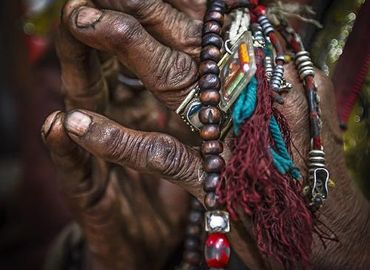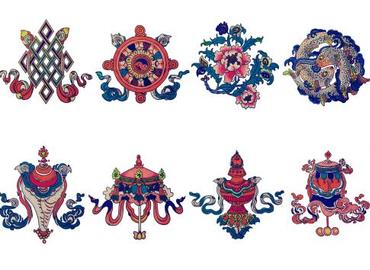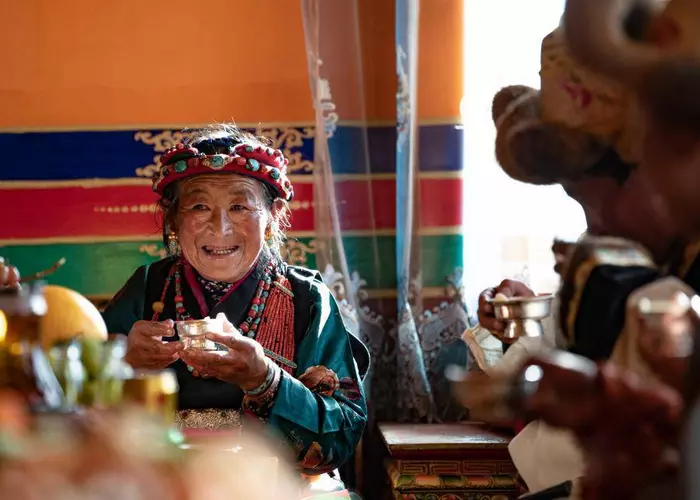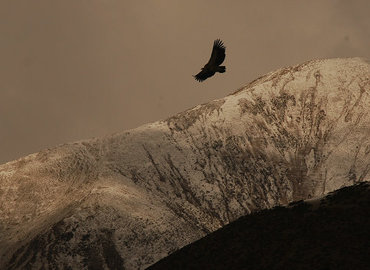Things You May Know about Tibetan Buddhism
- Zoe
- Last Updated : 05/20/2025
Due to the unique culture and beautiful scenery, Tibet has become an unrepeatable tourist destination in this world. This place is sacred and mysterious, closest to the sky, and full of faith. In this land, there are countless large and small temples, among which the well-known Tibetan Buddhist temples such as Potala Palace, Jokhang Temple, Sera Temple, Drepung Monastery, etc., have already been the highlights of Tibet tourism. Before traveling to Tibet, if you know more about Buddhist symbols, rituals, artifacts, etc., you can have a better understanding of Tibetan Buddhism.
Content Preview
- Golden Deer and Dharma Wheel
- Kalacharka
- Grand Golden Tiled Hall
- Prayer Wheels
- Chorten
- Mani Stone Piles
- Prayer Flags
- Prostration
- Jowo Buddha
- Incense
- Six-syllable Mantra
- The Swastika Symbol
- Tibetan Buddhist Debate
- White Conch
- Mandala
- Rock Carving & Paintings
- Six Realms of Existence
- Buddhist Stupa
- Displaying the Buddha Image
Golden Deer and Dharma Wheel
It's a very prominent symbol of Tibetan Buddhism as it belongs to one of the Eight Auspicious Symbols. It symbolizes that the Dharma is endless, and everything has Buddha-nature. It also commemorates Buddha's first teaching in a deer park, during which a pair of meek deer kneeled down to listen to his sermon. This auspicious ornament is generally placed in the center of the temple's main hall.
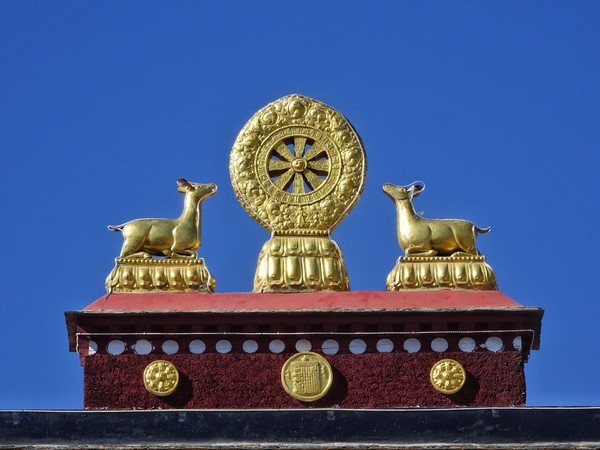
Kalacharka
The symbol is created by Padma Sambhava. It means “Wheel of Time” and "Gathering Ten Powerful Elements". The pattern is composed of seven Sanskrit letters and three graphics vertically combined. In Tibet, people place the Kalacharka on the stupa, gate, wall, etc., to increase the auspicious effect; it is also often seen that the Kalacharka is made into pendants and used as amulets. It is said that believers wearing Kalacharka are protected from disasters caused by earth, wind, water or fire.
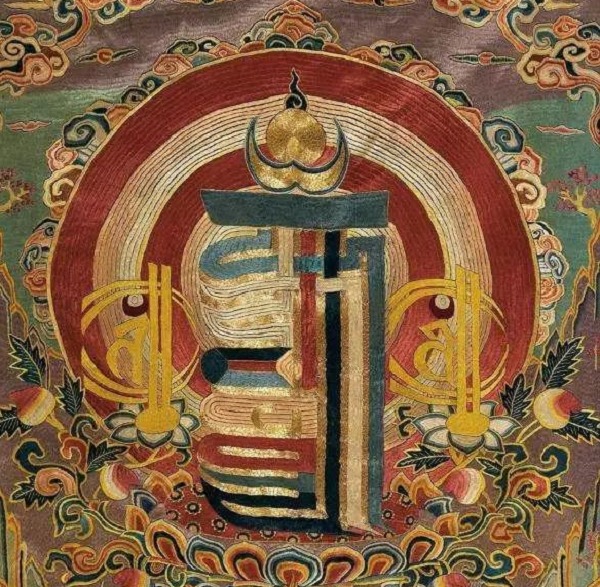
Grand Golden Tiled Hall
The Grand Golden Tiled Hall is the birthplace of Je Tsongkhapa. It is located in the center and is the main hall of Kumbum Monastery. The main hall is dedicated to commemorating the golden stupa of Je Tsongkhapa. Tsongkhapa, the founder of the Gelugpa Sect, is considered by Gelugpa as the "second Buddha". He is often enshrined with Lord Buddha at the same time.
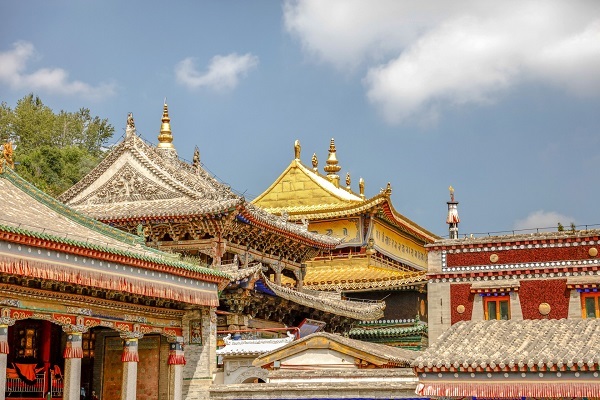
Prayer Wheels
A prayer wheel is a cylindrical wheel on a spindle made from metal, wood, stone, leather or coarse cotton. In Tibet, you can see prayer wheels at every monastery. It's also one of the ritual items of Tibetan Buddhism. The tube contains Tibetan scriptures or mantras. The pilgrims should walk from right to left, turn the prayer wheels one by one, and rotate it to the right, which is equivalent to chanting for accumulating merits and purifying negative karma.
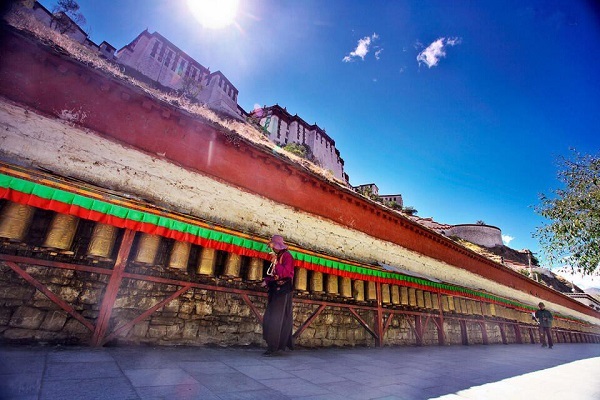
Chorten
Chorten, aka. Lamaist pagodas, the symbol of merit, is a unique architectural form of Tibetan Buddhism, similar to Indian stupa. This kind of stupa is popular in Tibet, Qinghai, Gansu, and Inner Mongolia and other Tibetan regions. The platform base and the tower top are exquisite in shape. A huge circular tower is placed on the tall base, and a long tower top is erected on it. There are many round wheels engraved on the top of the tower, and then a canopy and a moon orb are placed.
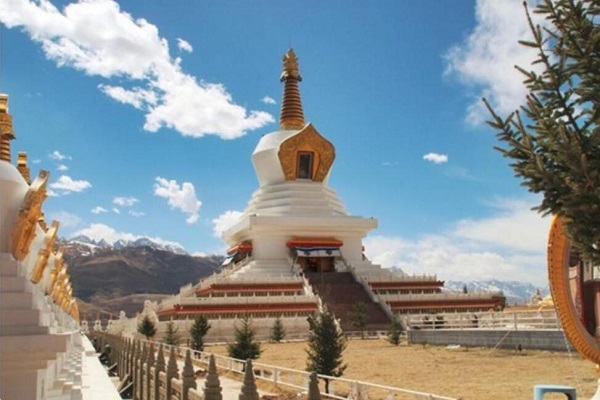
Mani Stone Piles
Mani stone piles are also called "scared piles". Most of them are engraved with Six-Character Great Bright Mantra, wisdom eyes, Buddha statues, and various auspicious patterns. You can find mani stones almost everywhere in the mountains, intersections, lakes, and rivers of Tibetan areas. It's said when the wind blows through the mani stones engraved with scriptures, it's equivalent to reading the scriptures.
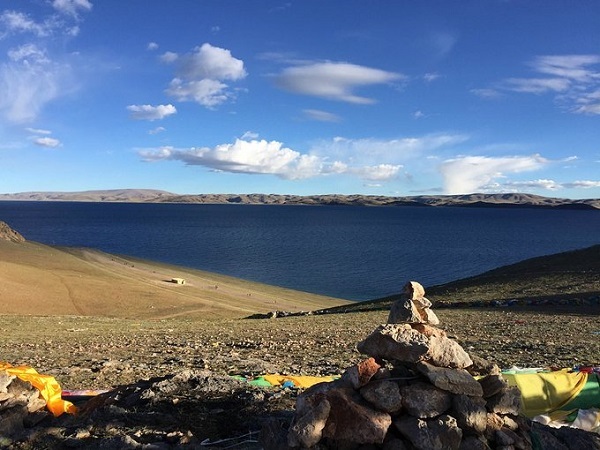
In Tibetan areas, people regard stones as living and spiritual things.
Prayer Flags
Tibetans string up colorful flags (Blue, white, red, green, and yellow in turn) printed with scriptures and hang them at the places where the wind is strongest (mountains, passes, bridges). When a strong wind blows over the colorful flags, it is equivalent to reading the scriptures. The prayer flag colors are fixed and cannot be innovated casually, as well as the order of each color. The significance of prayer flags is to pray for good luck and prosperity and eliminate disasters.
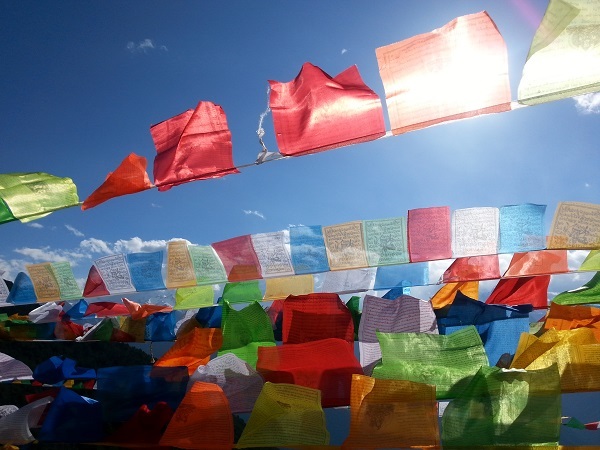
Prostration
Prostration is also called kowtow, which is one of the most sincere ways of worshipping the Buddha in Tibetan Buddhism. Pilgrims prostrate their whole bodies to the ground, which means worshipping Buddha with "body"; at the same time, they keep chanting mantras in their mouths, which means worshipping Buddha with words; and they keep thinking about the Buddha in their hearts, which means worshipping with "intention".
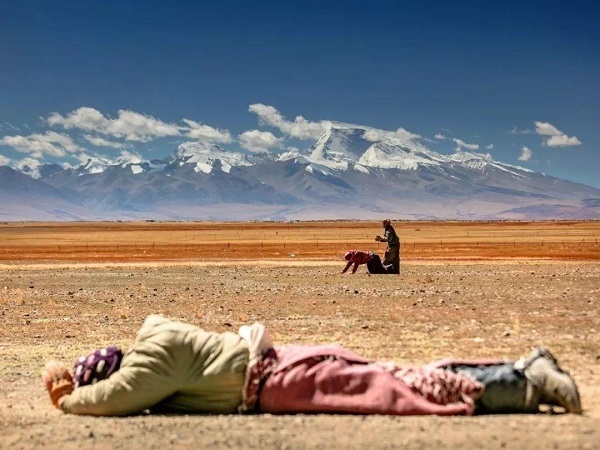
Jowo Buddha
Jowo Buddha is a 12-year-old statue of Sakyamuni, the most auspicious Buddha statue in Tibet, also called Jowo Rinpoche. "Jowo" means supreme, "Rinpoche" means precious one, which means precious master. This Buddha statue was bought in Lhasa by Princess Wencheng more than 2500 years ago. When Sakyamuni was alive and he consecrated this statue by himself. According to Buddhism, seeing the Buddha Buddha is equivalent to seeing the Lord Buddha.
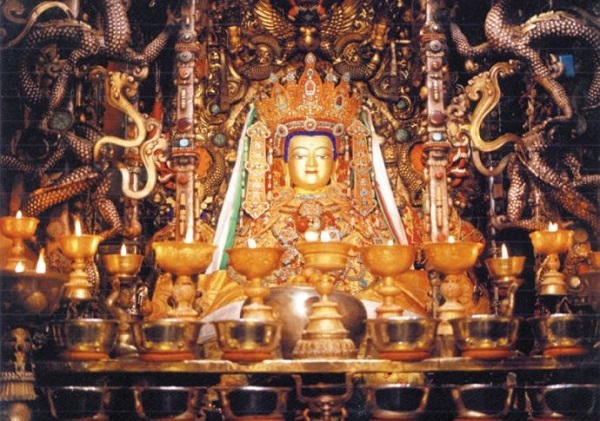
Incense
It is the customs of Tibetan sacrifice that Tibetans burn grains, pine and cypress branches to produce smoke to sacrifice gods. In all parts of Tibetan areas, there's incense in places where people live, and there are incense furnaces in monasteries and people's homes. The furnace is generally placed in the center of the courtyard and on the roof, which is the cleanest place carefully selected. In Tibetan, "incense" has become synonymous with offering sacrifices to gods.
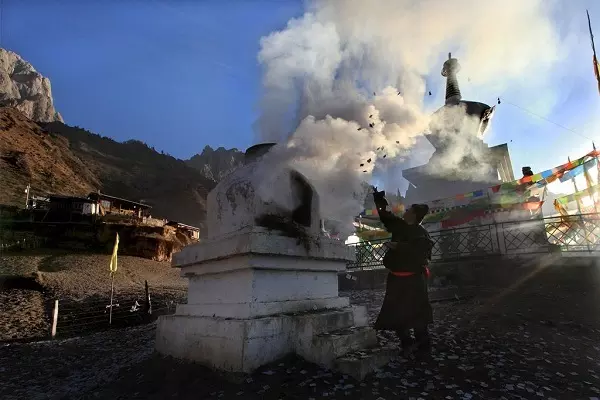
Six-syllable Mantra
Six-syllable Mantra is pronounced as “Om mani padme hum”. The mantra is seen as a condensed form of all the Buddhist teachings and is the most revered mantra in Vajrayana Buddhism. In Tibetan Buddhism, this is the most ubiquitous mantra and the most popular form of religious practice. Tibetan Buddhism regards it as the source of everything. It is said that reciting it over and over again can eliminate calamities and accumulate virtues. You can find the six-syllable Sanskrit mantra everywhere in Tibetan areas such as mani stones, prayer flags, prayer wheels, etc.
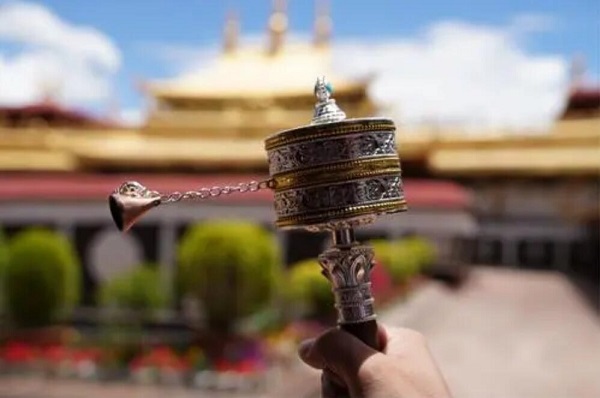
The Swastika Symbol
It can be said to be one of the most distinctive and common patterns in the Tibetan Plateau culture. For Tibetans, it is ancient and mysterious.
Visiting the Qinghai-Tibet Plateau, no matter where you are, you can always see many " 卐 " or " 卍 " symbols, in the herdsmen’s tents, in the peasants’ houses, in the temples, in nature... This symbol, whether left-handed or right-handed, is commonly called "Yongzhong" in Tibetan.
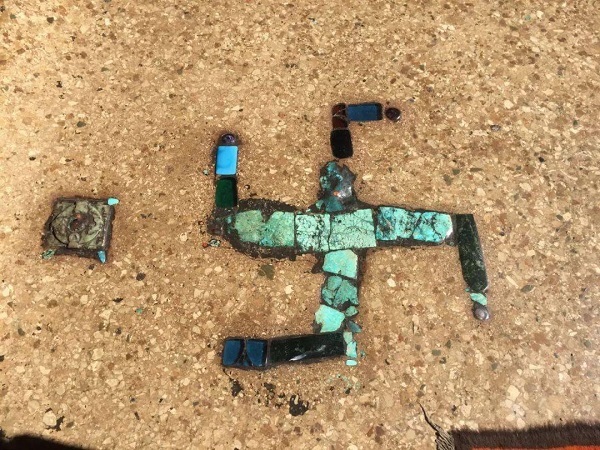
Tibetan Buddhist Debate
Buddhist scriptures are profound and full of philosophical doctrine. The first reading is very difficult to understand. And just reading and chanting the scriptures may not be able to understand thoroughly. Therefore, it's particularly important to defeat misconceptions, establish a defensible view, and clear away objections to that view. It's not only a routine but also accompanied by more exaggerated body movements. There are special venues for debating in many large temples, such as the famous Sera Monastery.
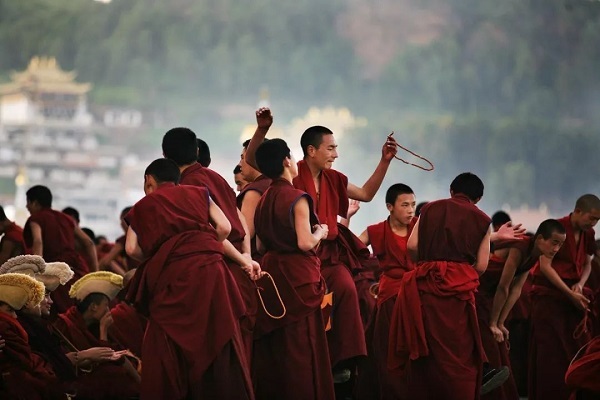
White Conch
The white Conch shell is also one of the top 8 ritual items of Tibetan Buddhism. Legend has it that when Shakyamuni first turned the Wheel of Dharma in Sarnath, Śakra (the ruler of Heaven) presented the Buddha with a right-turning white conch shell representing the deep and pervasive sound of the dharma. Since then, the right-turning white conch shell became a symbol of auspiciousness and perfection.
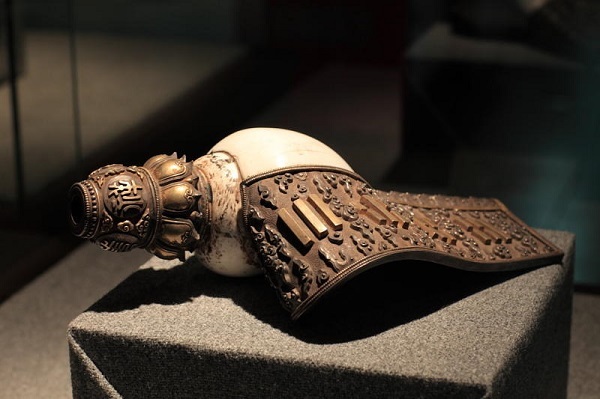
Mandala
Mandala is an imaginary palace. The Lord Buddha first used sand to set a mandala to illustrate the Buddhist view of the universe. The Buddha believed that both the large universe (the outer world, the universe) and the small universe (the human being, the inner world) had the same structure, which is a mandala. A grain of sand is also a world, a dojo, a temple, a city, and all are mandalas. The most you can see is the mandala thangka in the dojo. A mandala is an indispensable tool for Tibetan Buddhism practitioners. It contains all the principles of the world.
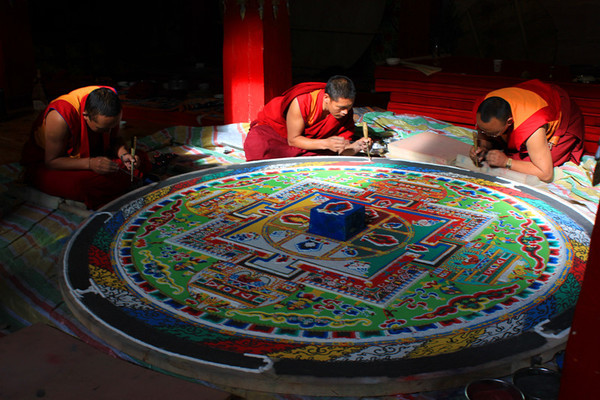
Rock Carving & Paintings
Tibetan Buddhists not only painted Buddha images or sutras on the walls of temples but also carved them on stones or cliffs. These portraits can be regarded as an incarnation of the Buddha after consecration, which is convenient for believers to pay homage to the Buddha at any time.
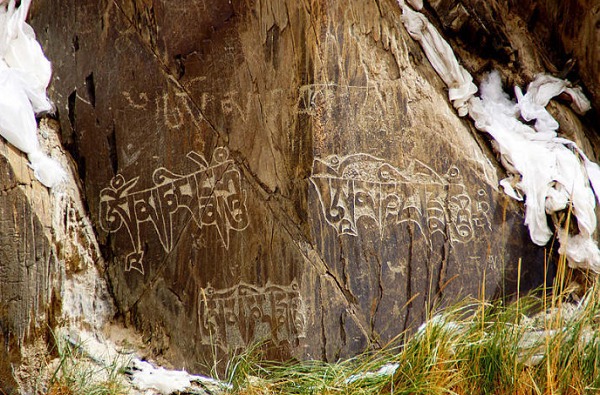
Six Realms of Existence
It is a manifestation of the theory of reincarnation taught by Buddha Shakyamuni. Tibetan Buddhism attaches great importance to figurative thinking. Many Tibetan Buddhist temples use thangka paintings, murals, and butter sculptures to explain Buddhism. The Six Realms of Existence are often painted on the outer walls of the sutra chanting halls, as one of the indispensable images. The image brings you not only a form of religious culture but also a sense of the complexity and difficulty of the existence of sentient beings. The essence of existence is originally a kind of suffering.
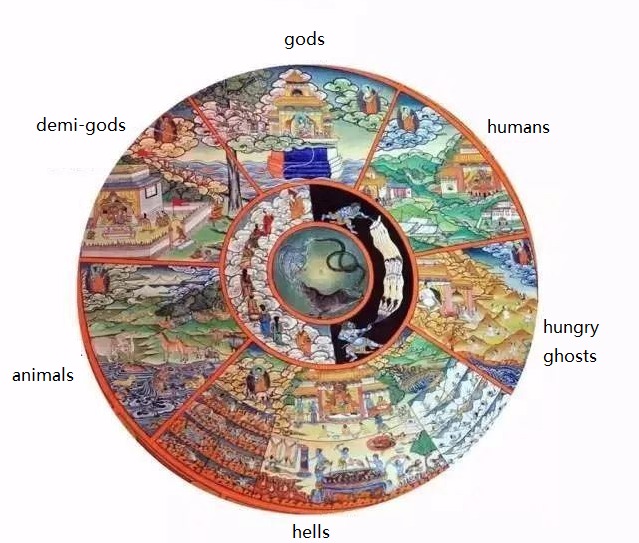
Buddhist Stupa
Buddhist Stupa is to enshrine and collect living Buddhas, guru bodies or ashes, evolved from the stupa of Buddha Shakyamuni. As the stupa enshrines those who have made great achievements in Tibetan Buddhism, it is named the spirit stupa. The Buddhist stupa embodies a special Tibetan funeral method. Most temples enshrine stupas of different sizes and properties. Eg. The Potala Palace in Lhasa houses the stupas of the Fifth Dalai Lama to the 13th Dalai Lama. The Tashilhunpo Monastery in Shigatse houses the stupas of the Fifth Panchen Lama to the Tenth Panchen Lama.
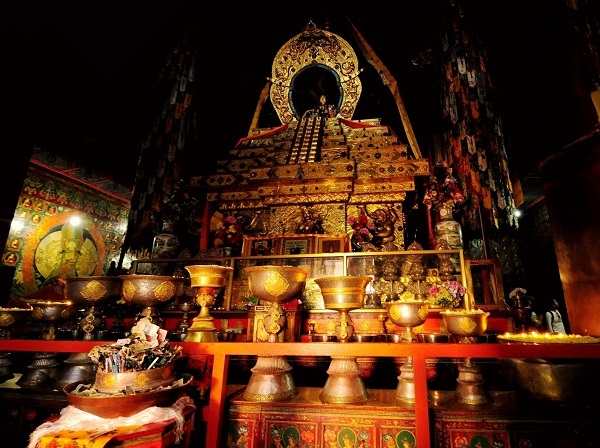
Displaying the Buddha Image
Displaying Buddha images refers to displaying the Buddha Thangkha. Those Buddha Thangkas are the treasures of the monasteries and are usually rolled up and protected. Every year during the Buddha image displaying season, there will be a few or even dozens of brawny lamas who will lift out huge Buddha statues ranging in length from a few meters to tens of meters, and hang them on the rock walls of the hillside under the blue sky and white clouds for the worship of the vast number of benevolent men and women.
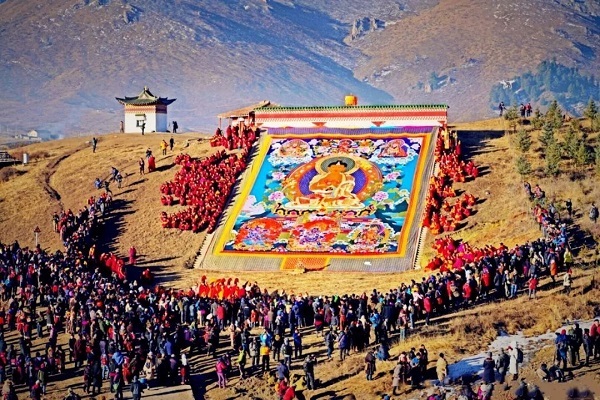
Email response within 0.5~24 hours.


